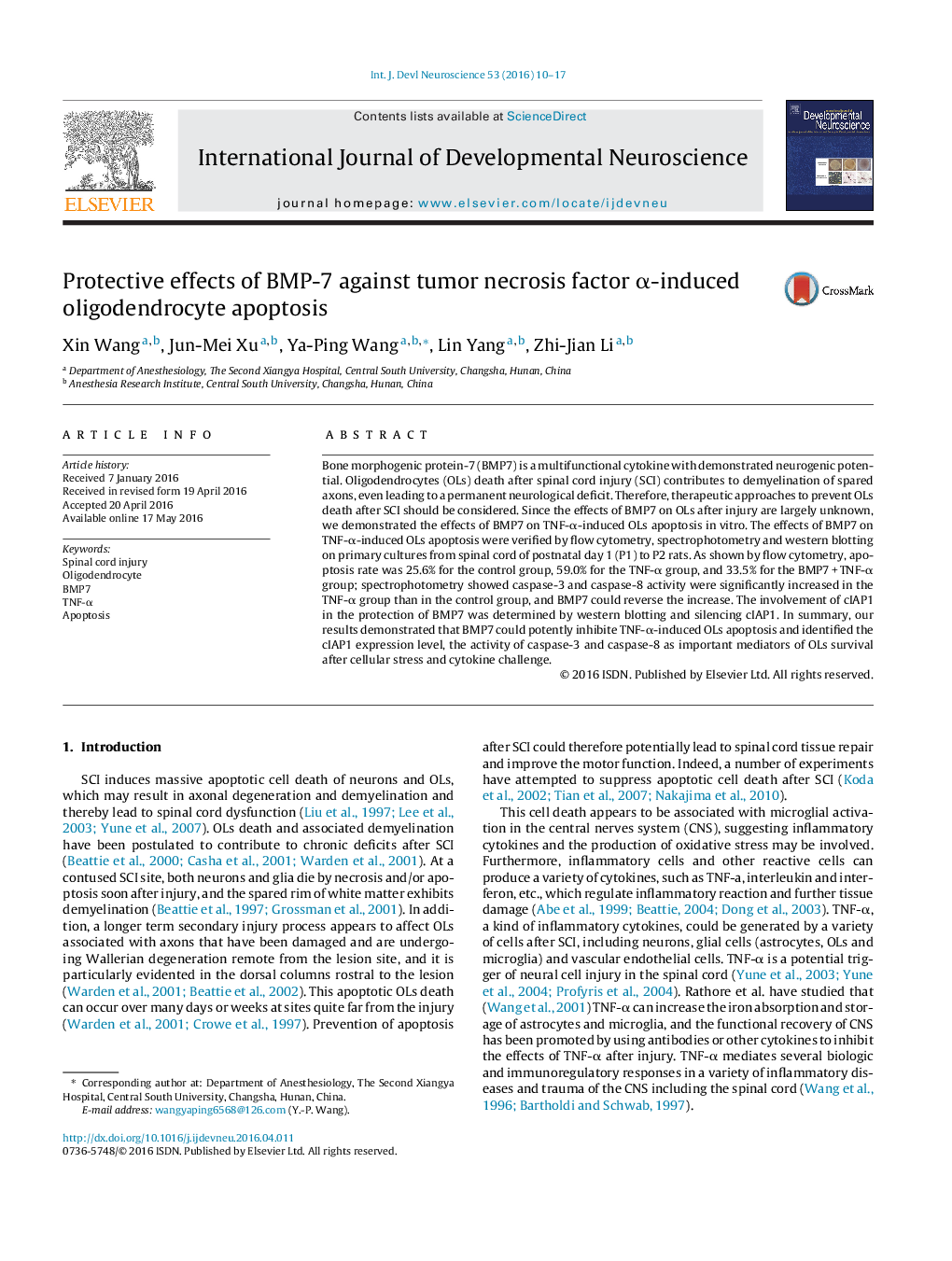| Article ID | Journal | Published Year | Pages | File Type |
|---|---|---|---|---|
| 2785611 | International Journal of Developmental Neuroscience | 2016 | 8 Pages |
•A phenomenon of BMP7 suppresses TNF-α-induced OLs apoptosis was revealed.•The mechanism of BMP7 suppresses TNF-α-induced OLs apoptosis is not through influence of JNK pathway.•The mechanism reveals the cIAP1 level the activity of caspase-3 and -8 as vital mediators of OLs survival in cellular stress and cytokine challenge.
Bone morphogenic protein-7 (BMP7) is a multifunctional cytokine with demonstrated neurogenic potential. Oligodendrocytes (OLs) death after spinal cord injury (SCI) contributes to demyelination of spared axons, even leading to a permanent neurological deficit. Therefore, therapeutic approaches to prevent OLs death after SCI should be considered. Since the effects of BMP7 on OLs after injury are largely unknown, we demonstrated the effects of BMP7 on TNF-α-induced OLs apoptosis in vitro. The effects of BMP7 on TNF-α-induced OLs apoptosis were verified by flow cytometry, spectrophotometry and western blotting on primary cultures from spinal cord of postnatal day 1 (P1) to P2 rats. As shown by flow cytometry, apoptosis rate was 25.6% for the control group, 59.0% for the TNF-α group, and 33.5% for the BMP7 + TNF-α group; spectrophotometry showed caspase-3 and caspase-8 activity were significantly increased in the TNF-α group than in the control group, and BMP7 could reverse the increase. The involvement of cIAP1 in the protection of BMP7 was determined by western blotting and silencing cIAP1. In summary, our results demonstrated that BMP7 could potently inhibite TNF-α-induced OLs apoptosis and identified the cIAP1 expression level, the activity of caspase-3 and caspase-8 as important mediators of OLs survival after cellular stress and cytokine challenge.
